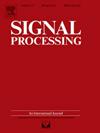脱敏场景下文档图像伪造检测与定位
IF 3.4
2区 工程技术
Q2 ENGINEERING, ELECTRICAL & ELECTRONIC
引用次数: 0
摘要
文档图像在电子商务中被广泛使用,其中包含的一些隐私信息在流通前可能会被脱敏。由于无害脱敏与恶意篡改在动机和外观上都有很大的不同,因此产生了一种新的取证场景,当存在脱敏伪像时,需要可靠的伪造检测和定位。在本文中,我们首次提出DCLNet (desensitisation involved contrast Learning based forensic Network)来解决这个问题,以提高像素级篡改定位和图像级伪造检测的性能。DCLNet建立在基于convnext的编码器-解码器网络上,具有全局上下文注意模块,使其能够从多尺度学习有效特征。为了解决在不受强脱敏伪像干扰的情况下学习弱篡改痕迹的困难,我们设计了一个对比学习模块来有效区分两种操作。此外,我们构建了一个文档图像数据集,该数据集考虑了各种文档类型,并包含篡改和脱敏操作,为训练和评估提供了足够的数据。大量的实验结果表明,DCLNet在新任务中优于现有的方法,并且对后处理具有良好的鲁棒性,并且对其他来源的文档图像具有更好的适应性。本文章由计算机程序翻译,如有差异,请以英文原文为准。
Document image forgery detection and localization in desensitization scenarios
Document images are widely used in e-commerce, and some privacy information contained in them may be desensitized before circulation. Since innocuous desensitization is rather different from malicious tampering in both motivation and appearance, it results in a new forensic scenario, in which reliable forgery detection and localization is needed when desensitization artifacts present. In this paper, we address the issue for the first time by proposing DCLNet (Desensitization involved Contrastive Learning based forensic Network), to improve the performance of pixel-level tampering localization and image-level forgery detection. DCLNet is built upon a ConvNeXt-based encoder–decoder network with a global context attention module, enabling it to learn effective features from multi-scales. To tackle the difficulty of learning weak tampering traces without interference from strong desensitization artifacts, we design a contrastive learning module to effectively differentiate between the two kinds of manipulations. Additionally, we construct a document image dataset that considers various document types and contains both tampering and desensitization manipulations, providing sufficient data for training and evaluation. Extensive experimental results demonstrate that DCLNet outperforms existing methods for the new task, and exhibits good robustness to post-processing and better adaptability to other sources of document images.
求助全文
通过发布文献求助,成功后即可免费获取论文全文。
去求助
来源期刊

Signal Processing
工程技术-工程:电子与电气
CiteScore
9.20
自引率
9.10%
发文量
309
审稿时长
41 days
期刊介绍:
Signal Processing incorporates all aspects of the theory and practice of signal processing. It features original research work, tutorial and review articles, and accounts of practical developments. It is intended for a rapid dissemination of knowledge and experience to engineers and scientists working in the research, development or practical application of signal processing.
Subject areas covered by the journal include: Signal Theory; Stochastic Processes; Detection and Estimation; Spectral Analysis; Filtering; Signal Processing Systems; Software Developments; Image Processing; Pattern Recognition; Optical Signal Processing; Digital Signal Processing; Multi-dimensional Signal Processing; Communication Signal Processing; Biomedical Signal Processing; Geophysical and Astrophysical Signal Processing; Earth Resources Signal Processing; Acoustic and Vibration Signal Processing; Data Processing; Remote Sensing; Signal Processing Technology; Radar Signal Processing; Sonar Signal Processing; Industrial Applications; New Applications.
 求助内容:
求助内容: 应助结果提醒方式:
应助结果提醒方式:


